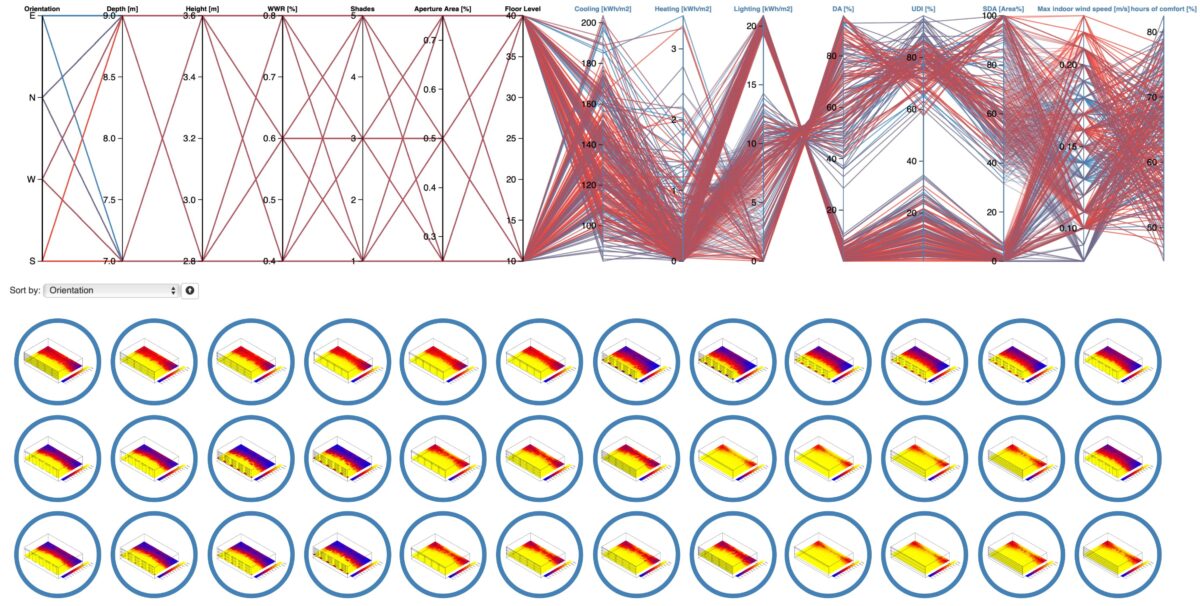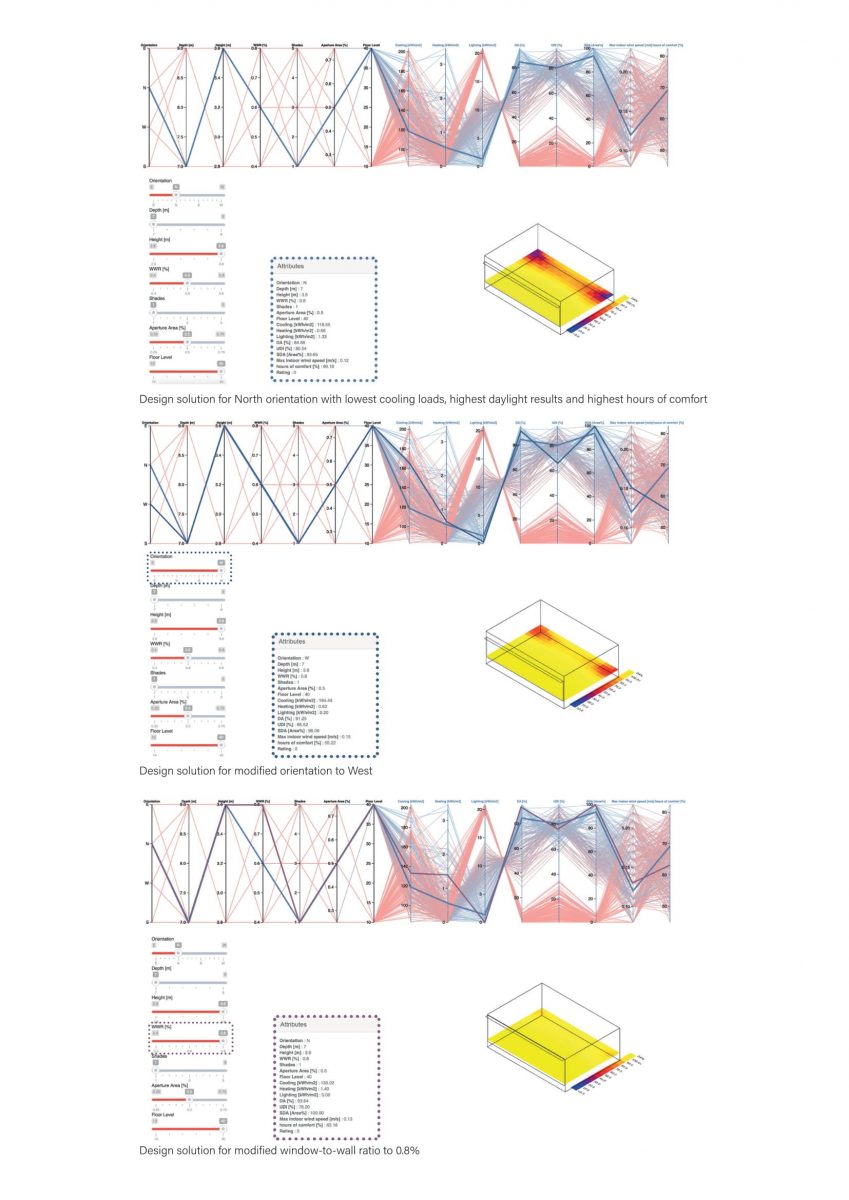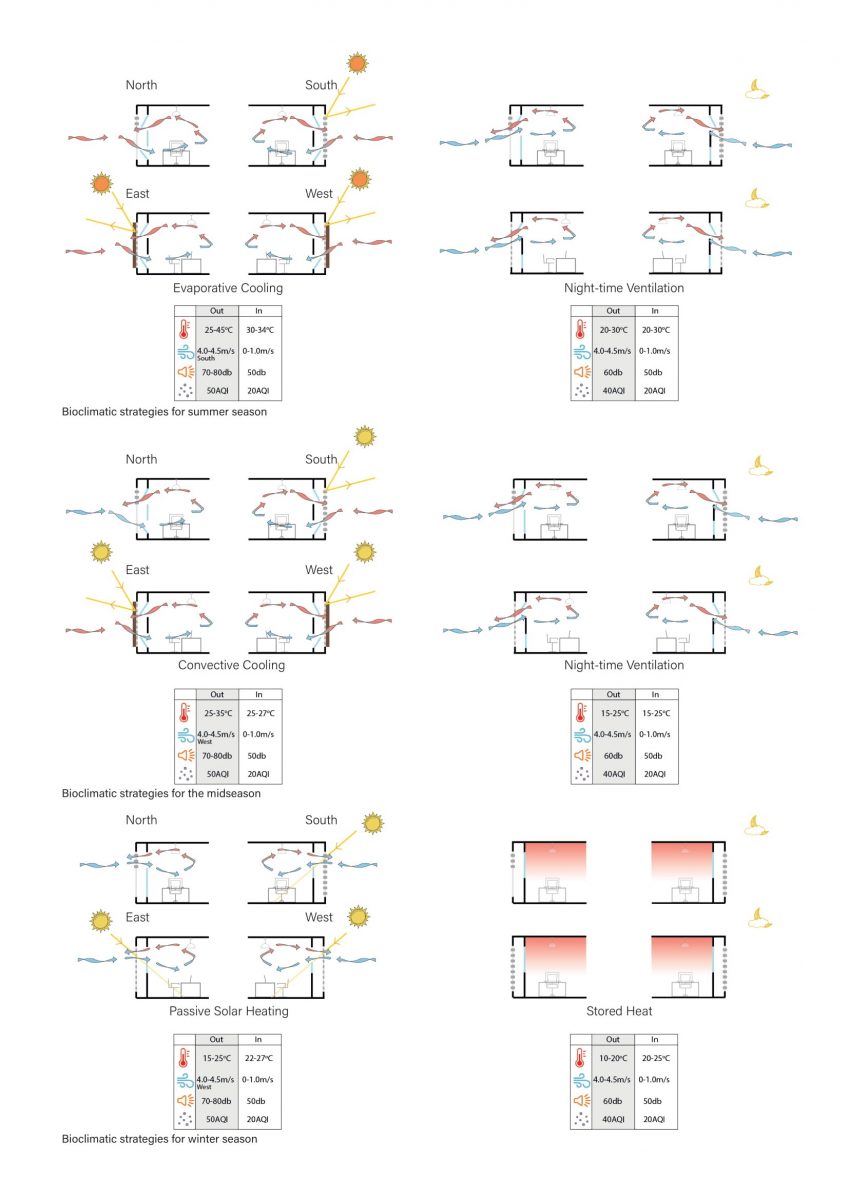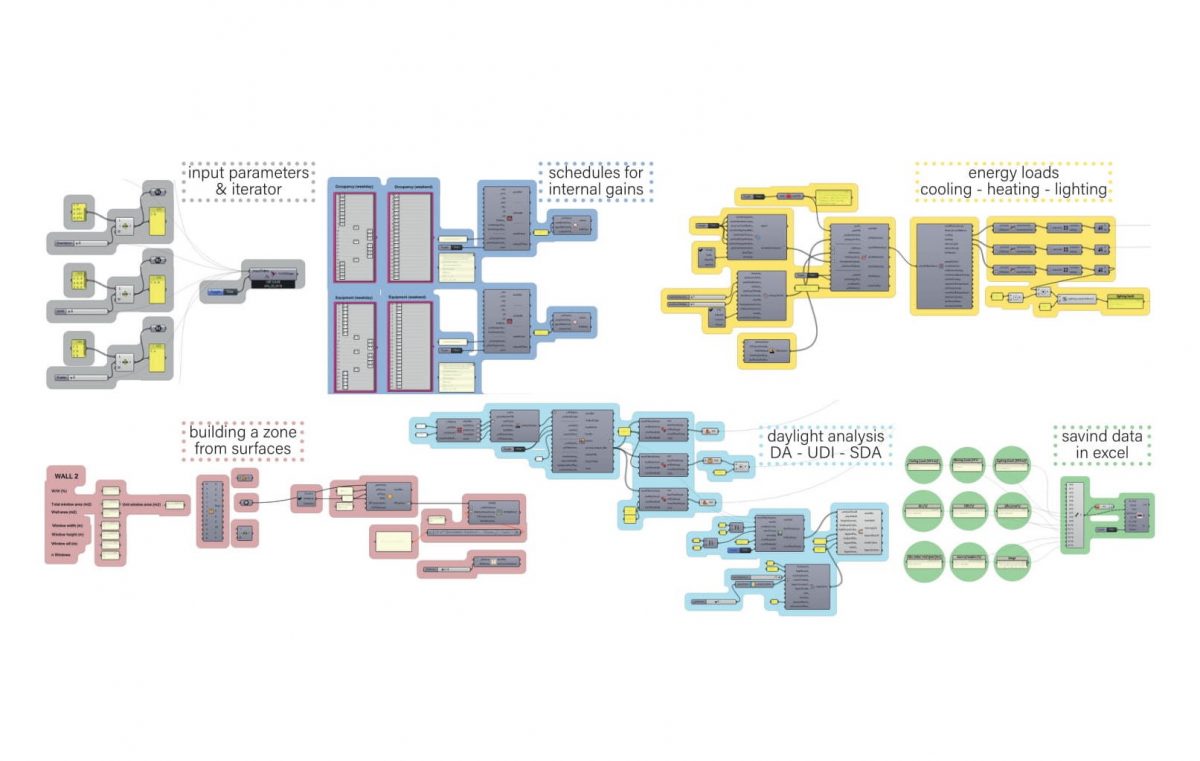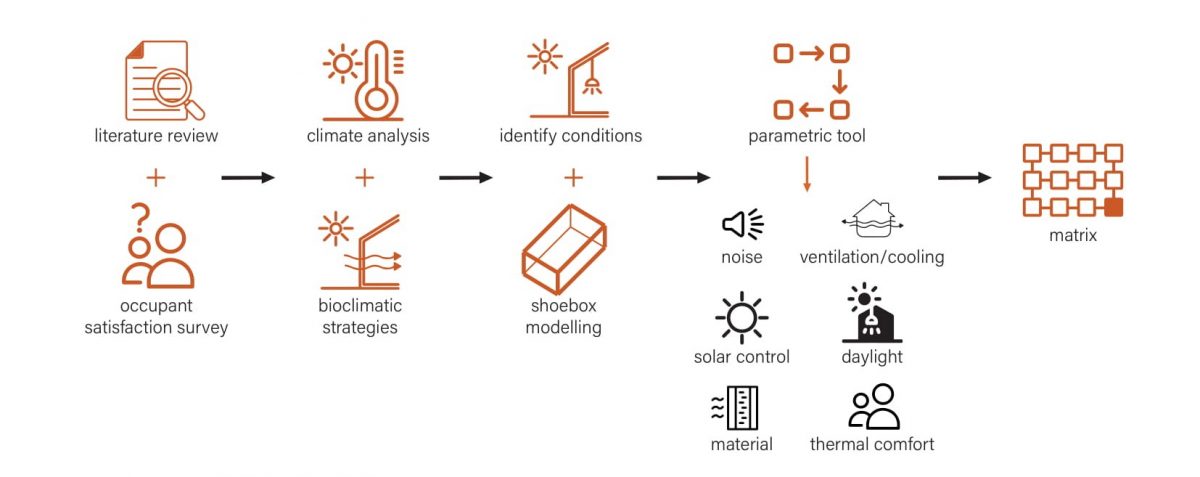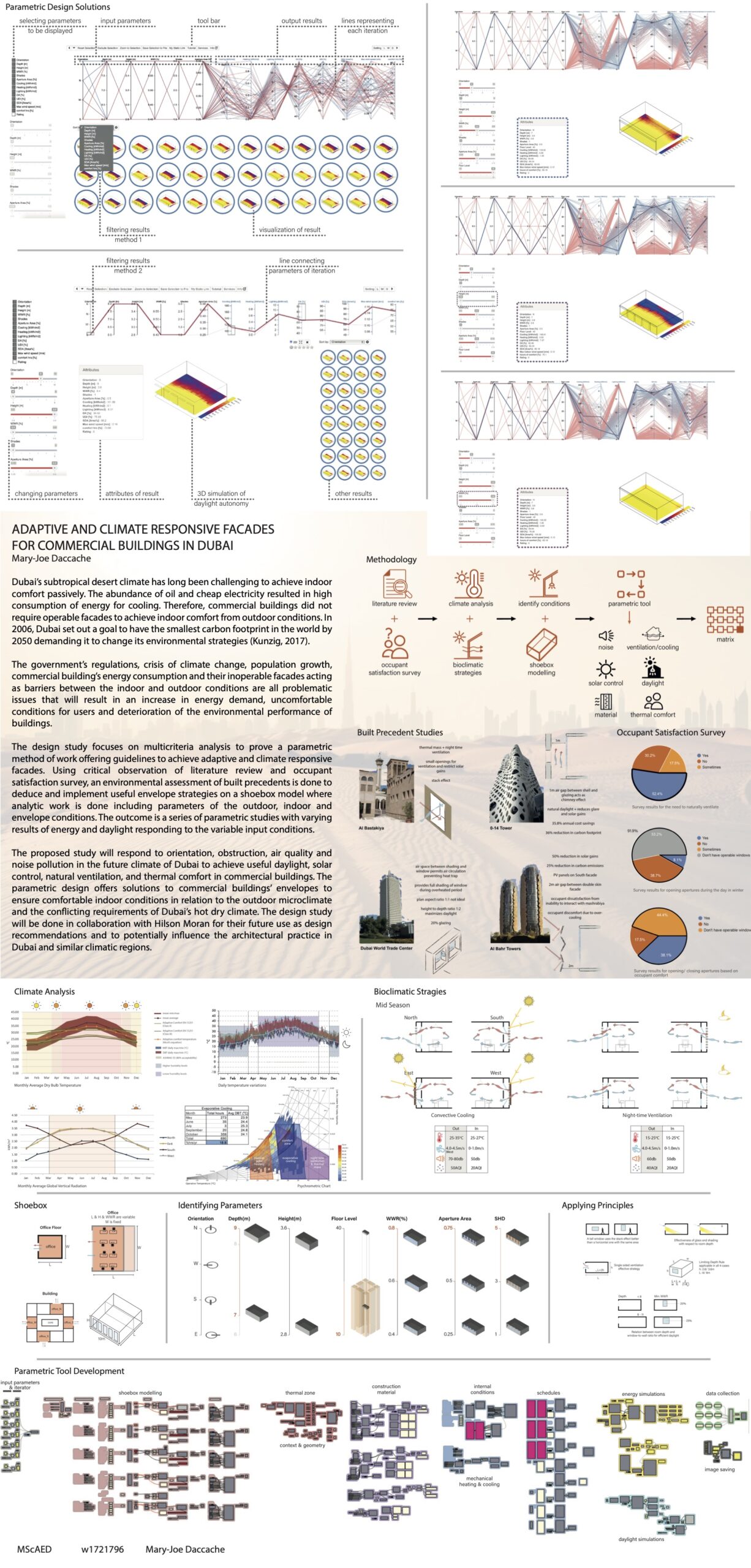Adaptive and Climate Responsive Façades for Commercial Buildings in Dubai
Dubai’s subtropical desert climate has long been challenging to achieve indoor comfort passively. The abundance of oil and cheap electricity results in high energy consumption to cool buildings.
The government’s regulations, climate change, population growth, commercial buildings’ energy consumption, and their inoperable façades, are all problematic issues that will result in an increase in energy demand, uncomfortable conditions for users and deterioration of the environmental performance of buildings.
The design study focuses on a multicriteria analysis to prove a parametric method of work that offers guidelines to achieve adaptive and climate responsive façades. Using critical observation of a literature review, and an occupant satisfaction survey, an environmental assessment of built precedents is done to deduce and implement useful envelope strategies on a shoebox model where analytic work is done including parameters of the outdoor, indoor and envelope conditions.The outcome is a series of parametric studies with varying results of energy and daylight responding to the variable input conditions.
The proposed study responds to orientation, obstruction, air quality and noise pollution in the future climate of Dubai to achieve useful daylight, solar control, natural ventilation and thermal comfort in commercial buildings. The parametric design offers solutions to commercial buildings’ envelopes to ensure comfortable indoor conditions in relation to the outdoor microclimate and the conflicting requirements of Dubai’s hot dry climate. The design study is done in collaboration with Hilson Moran for their future use as design recommendations, and to potentially influence the architectural practice in Dubai and similar climatic regions.










